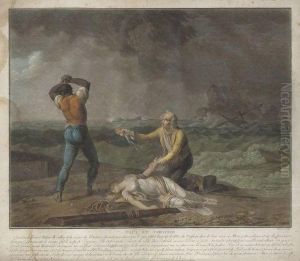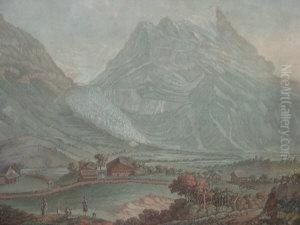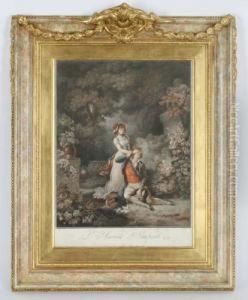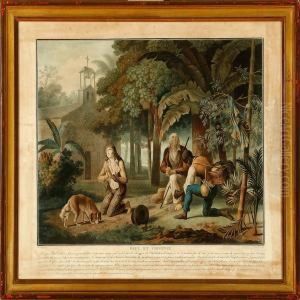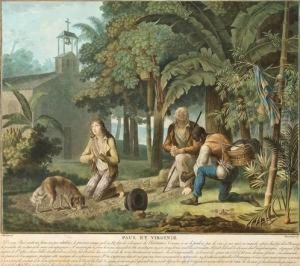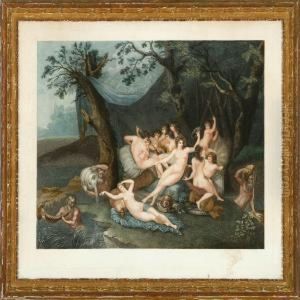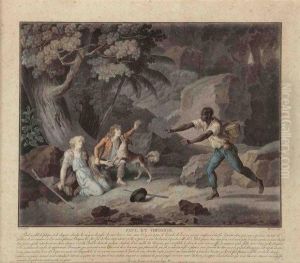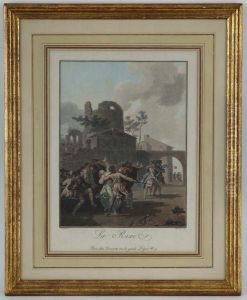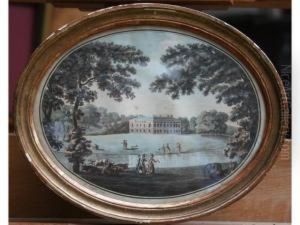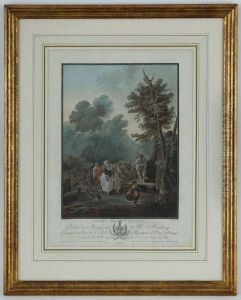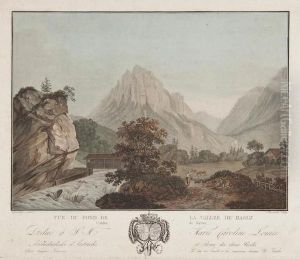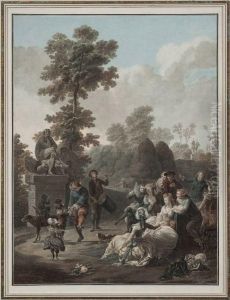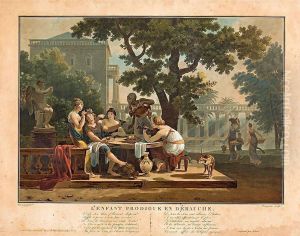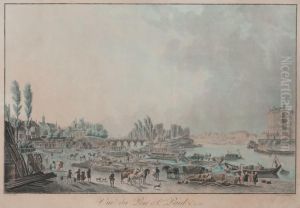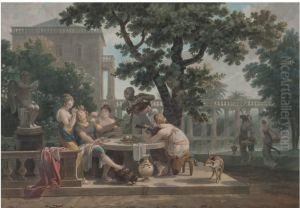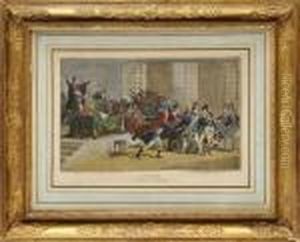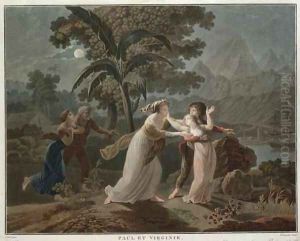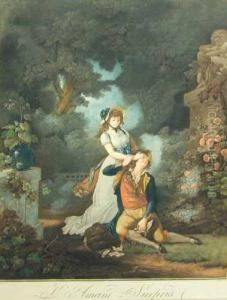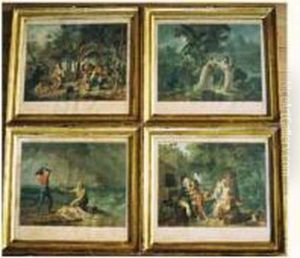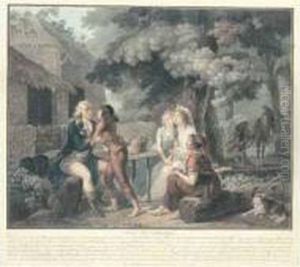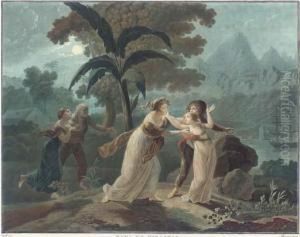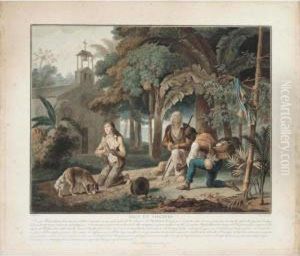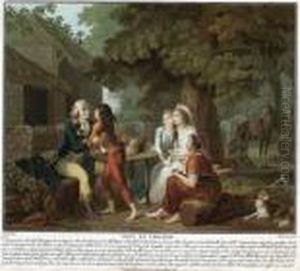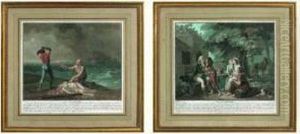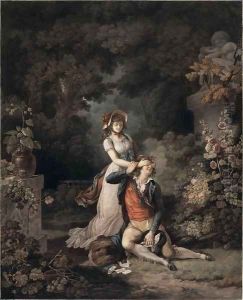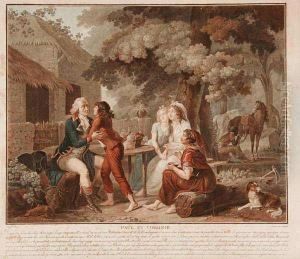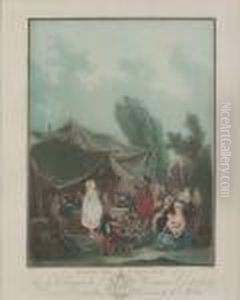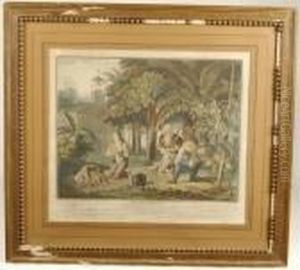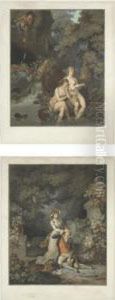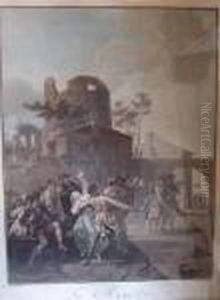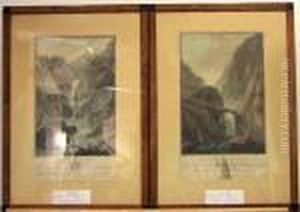Charles-Melchior Descourtis Paintings
Charles-Melchior Descourtis was a French engraver and printmaker, born in Paris in 1753. He is particularly noted for his work in color printmaking, especially using the 'à la poupée' technique, where different colors are applied to a single plate before printing. Descourtis was a student of François-Elie Vincent and later of Jean-Georges Wille, a renowned engraver.
Descourtis's career was significantly shaped by the technological and artistic advancements of his time. The 18th century saw a flourishing of printmaking in Europe, with artists experimenting with new techniques and aesthetics. Descourtis capitalized on these developments and became known for his skillful handling of color and his ability to reproduce the effect of paintings in his prints.
During his lifetime, Descourtis produced a significant body of work that included reproductions of contemporary paintings, genre scenes, and fashionable subjects of the time. His prints were sought after by collectors and connoisseurs, and he worked with several well-known artists of his era to create printed versions of their works. His ability to capture the subtleties of light and shade, as well as his use of vibrant colors, distinguished his prints from those of his contemporaries.
Despite his success, Descourtis's life was not without challenges. The French Revolution and the resulting social upheavals had a profound impact on the art market and the lives of artists. Nevertheless, Descourtis continued to work and contribute to the art world until his death in 1820.
Charles-Melchior Descourtis's legacy lies in his mastery of color printing and his role in the evolution of printmaking in the late 18th and early 19th centuries. His works remain a testament to the artistic achievements of his time and continue to be studied and appreciated by art historians and enthusiasts.
